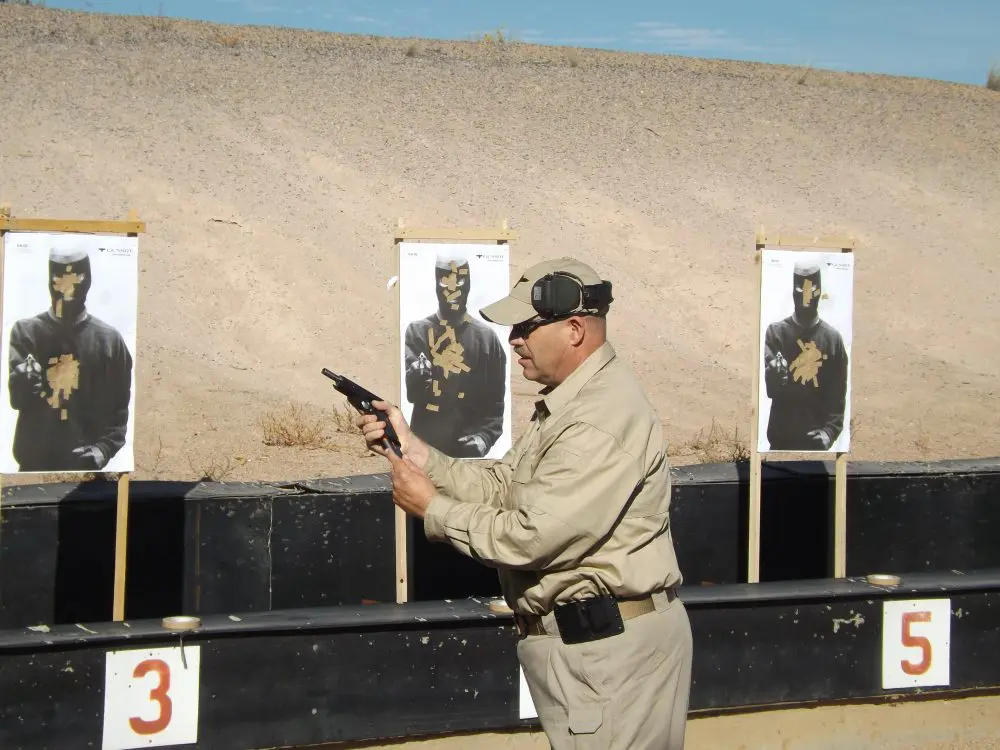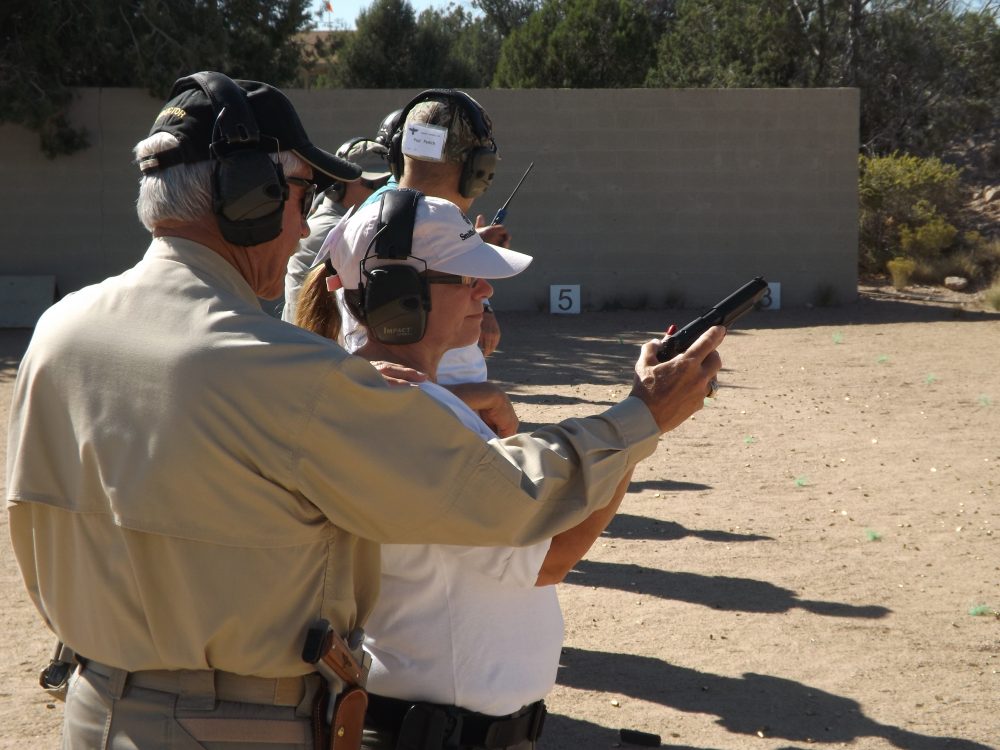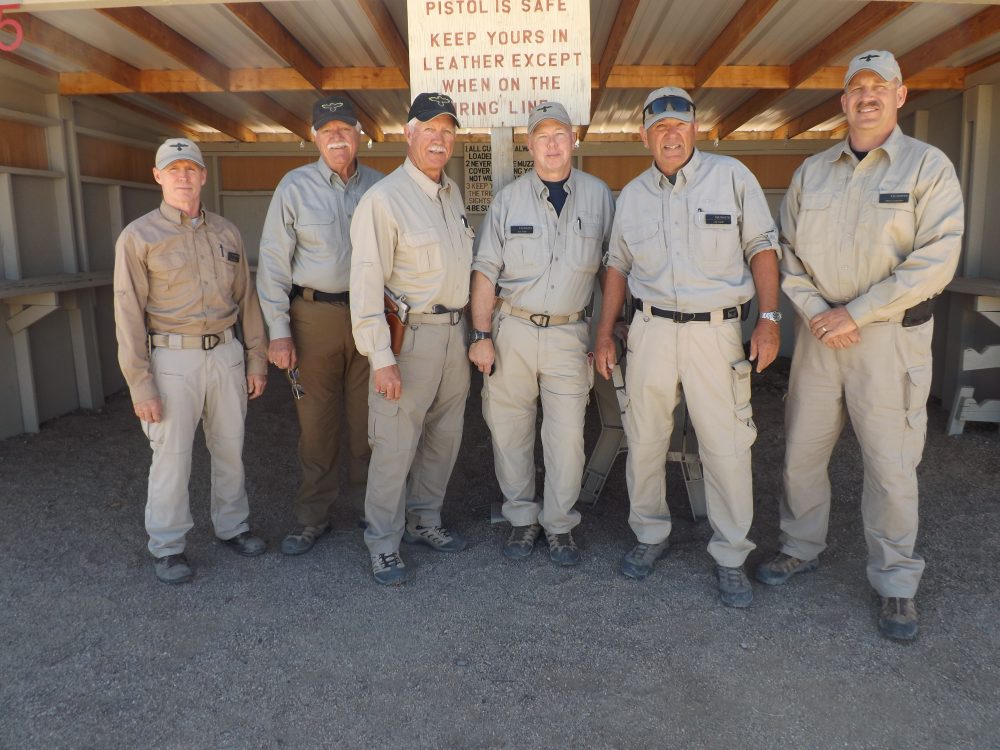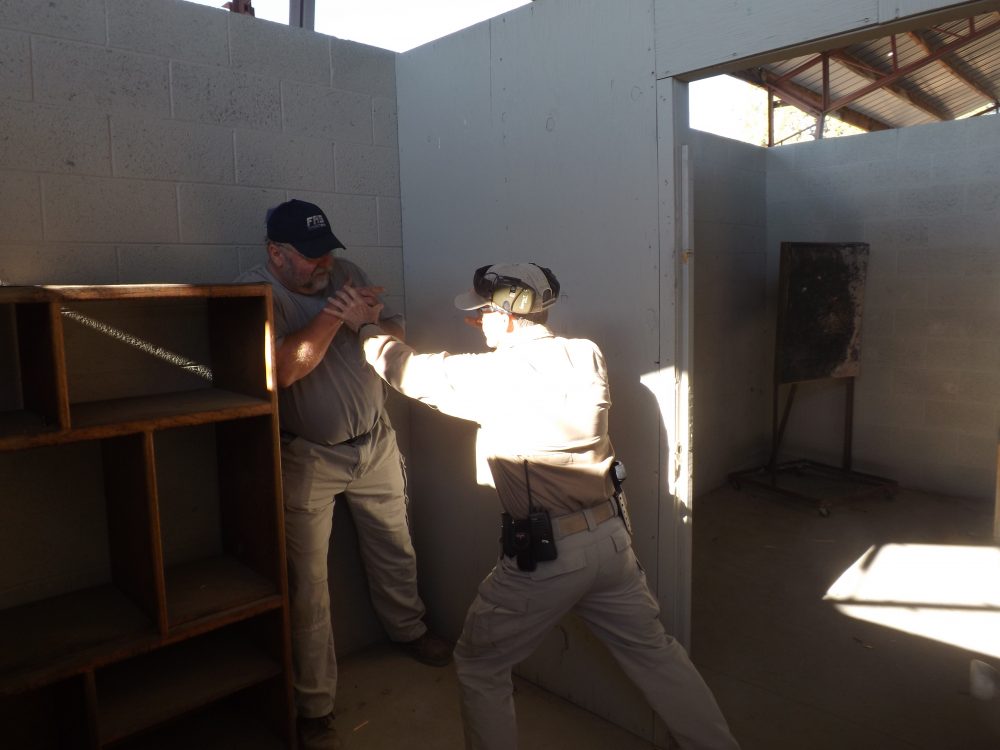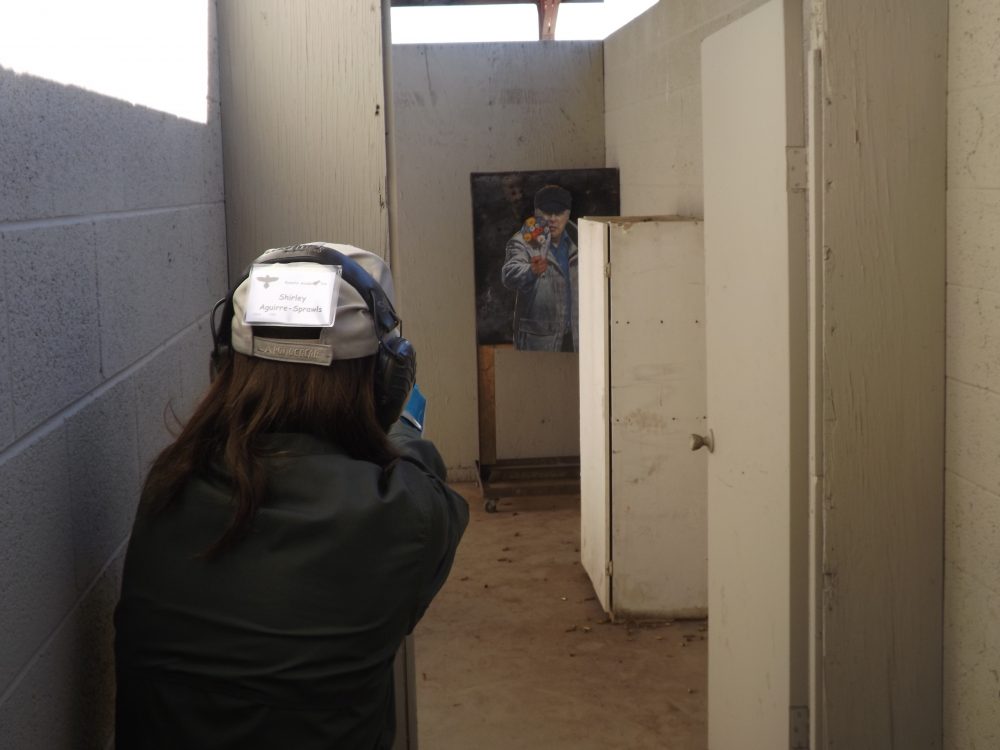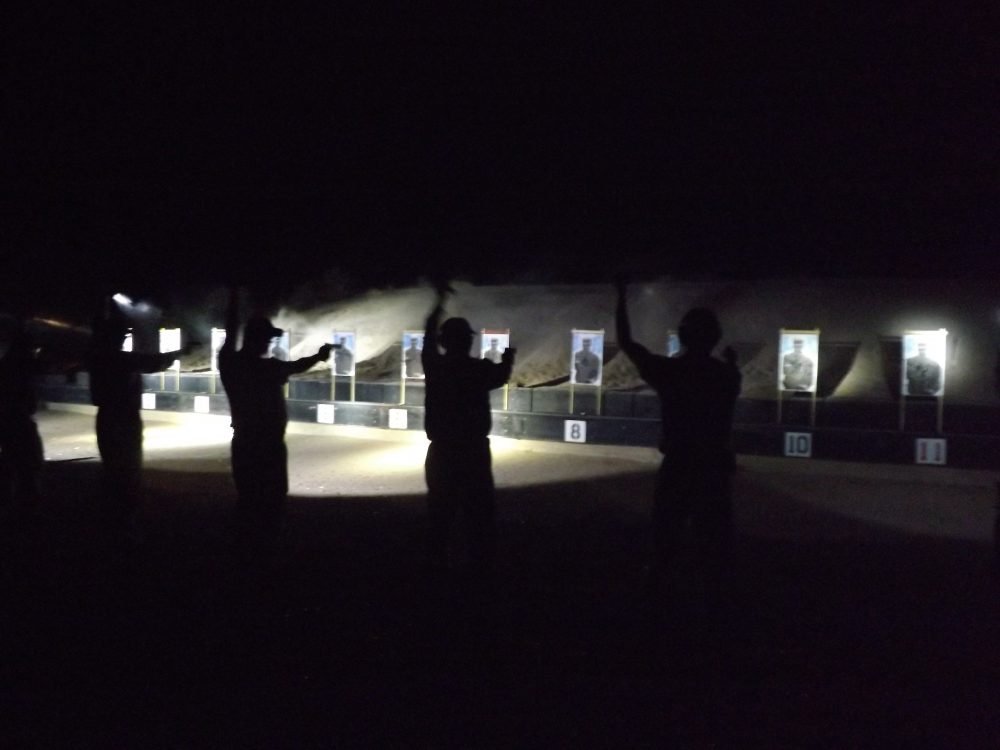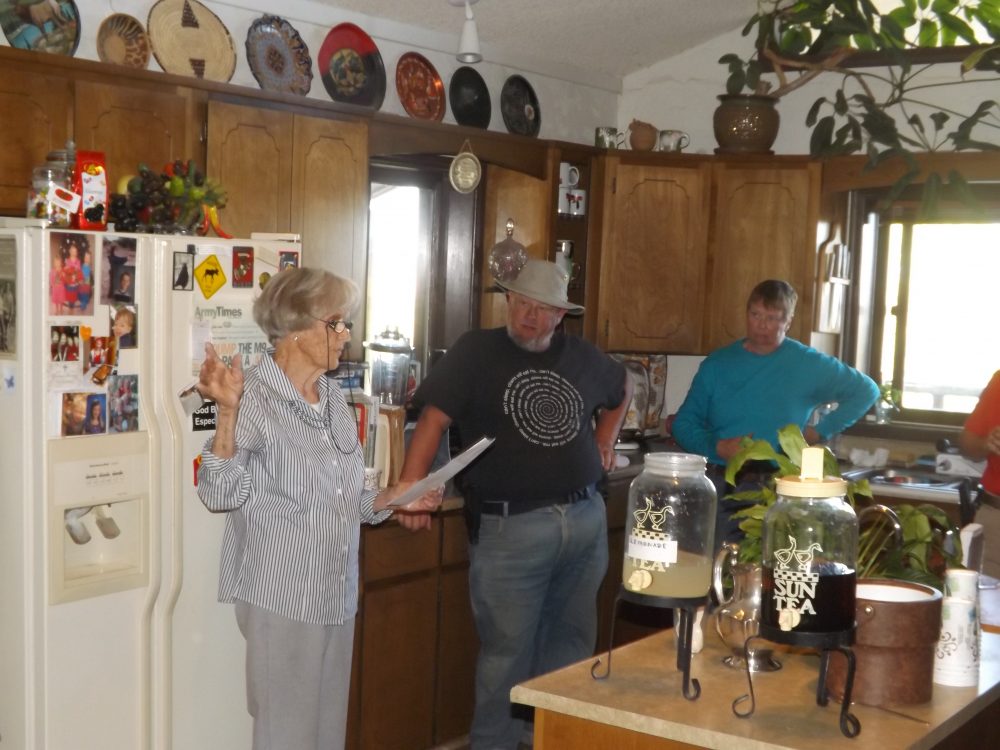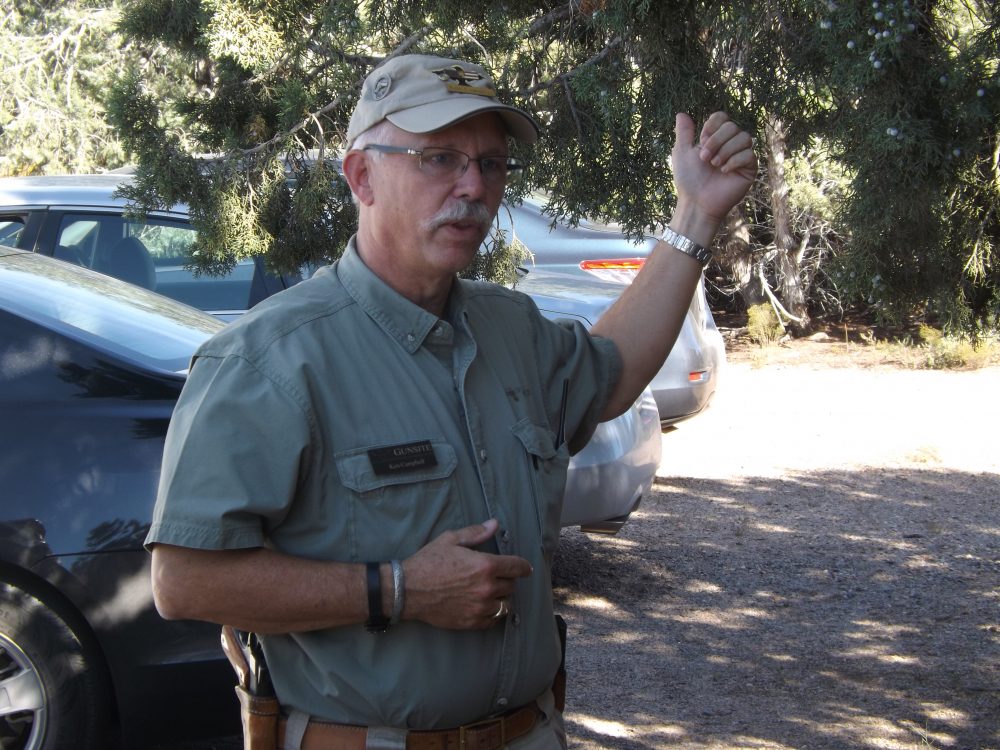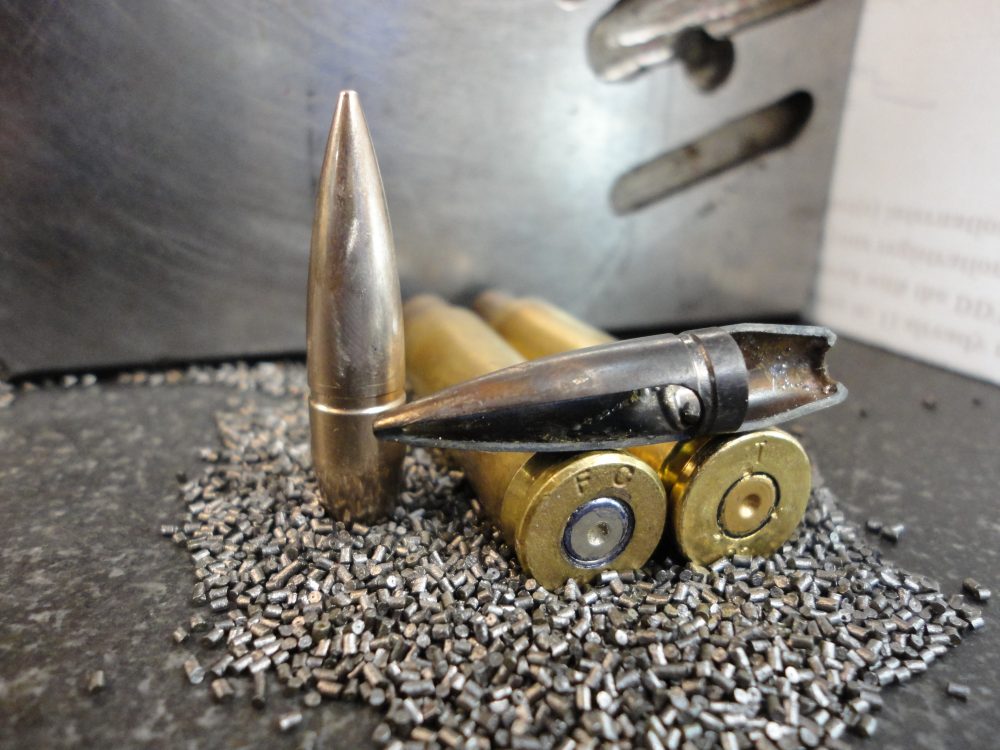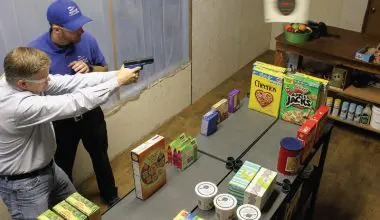Gunsite Instructor Steve Lyseczko demonstrates and explains the speed reload.
Why would a nationally recognized defensive firearms instructor spend a week taking a basic defensive pistol course? What would he gain by learning how to draw and shoot, malfunction clearance and speed and tactical reloading? The answers to these questions might surprise you.
Interestingly, there is no one good answer, but several parts of the answer, which add up to making it a worthwhile endeavor. Let me explain.
First was the bucket list concept. Though I’d trained at most of the “big name” schools and with most of the “big name” instructors and had visited Gunsite three times previously, I had never actually attended a class there. I wanted to go before I get too old to fully appreciate it.
I also wanted to compare the curriculum and teaching methods of my own school, The Firearms Academy of Seattle, against what is currently being taught at what I believe is the nation’s premier shooting school. What better way to do that than to take its core class?
Student Kristy Young works through the technique, with Coach Charlie McNeese giving her feedback. After a few repetitions, Kristy had it down.
When I first started teaching firearms for a living in 1990, there were basically two role models to follow. The one I initially patterned my shooting school curriculum after was that of Massad Ayoob’s Lethal Force Institute, with a good dose of law enforcement training thrown in for balance. Using these methods and techniques served me well for many years, and in fact I still teach for Ayoob as an adjunct instructor for his current business, the Massad Ayoob Group.
The other role model was, of course, Jeff Cooper and what he was doing with the American Pistol Institute (later Gunsite Academy). As most beginning instructors know, those first years of teaching on your own can be very lean financially, and I never had the resources to make a trip to Gunsite, so I studied video and trained with instructors who had trained at Gunsite—men like Manny Kapelsohn, John Farnam, and Chuck Taylor.
Manny had been a Gunsite instructor, John an early student of Cooper’s, and of course Chuck was one of Cooper’s first Operations Managers at Gunsite.
Left to right: John Hutchison, Jerry McCown, Charlie McNeese, Ken Tuttle, Jay Tuttle, and Steve Lyseczko. Total teaching experience: 176 years.
Table of Contents
LESSONS FOR THE SEASONED INSTRUCTOR
With those experiences and using my own time as a law enforcement trainer, competitive shooter, and consummate seeker of shooting knowledge, I blended these to form the core of my curriculum.
Interestingly, at the end of the week-long class at Gunsite, I was pleased to find that the Gunsite curriculum and teaching methods and my own were much more similar than different. An example of this is how new skills are taught to students.
One of the first things I learned about Cooper years ago was that he would never demonstrate for his students and also forbade demonstration by his instructors. His reasoning (according to Gunsite Instructor Jerry McCown) was that 1) the students didn’t come to see the instructors shoot, 2) instructors shooting could at times be interpreted as showing off, and 3) if the instructor flubbed a demo, their credibility would be negatively affected.
Knowing this going into the class, I was pleasantly surprised to see this antiquated teaching methodology gone and replaced with the more common and successful “Tell-Show-Do-Feedback” method.
John Hutchison shows author how quickly a committed adversary can trap an individual in a corner.
First, the instructor explains and demonstrates. Then the students perform the new skill and, either when they’re doing it or immediately thereafter, the instructor gives them feedback (good or bad). The cycle repeats itself again and again until the students have learned the technique sufficiently to move on to the next technique, usually more complicated or faster.
As the course went on, I was also very impressed with the instructor cadre and the instructor-to-student ratio. For our 23-person class, we had six instructors. Knowing how much it costs to employ top-notch instructors, there is no doubt in my mind that when it comes to the philosophy behind Gunsite, students are the top priority.
I know of no other place where one can go study the martial art of defensive handgunning with an instructor cadre of this caliber, all of whom were former military, law enforcement, or both.
Student Shirley Aquirre-Sprawls negotiates indoor simulator.
MODERN TECHNIQUES AND TACTICS
By the fourth day of instruction, students were solidly grounded in the fundamentals of the Modern Technique of the Pistol, and it was time for working some tactical considerations, such as building search techniques and low-light shooting—two disciplines I was keenly interested in seeing how they are taught at Gunsite.
Some instructors pooh-pooh the idea of teaching building search techniques for the average armed citizen, but Gunsite doesn’t (and neither do I). For this class, we were treated to an excellent demonstration and then coaching by Instructor John Hutchison, a former Yavapai County, Arizona, SWAT Team member.
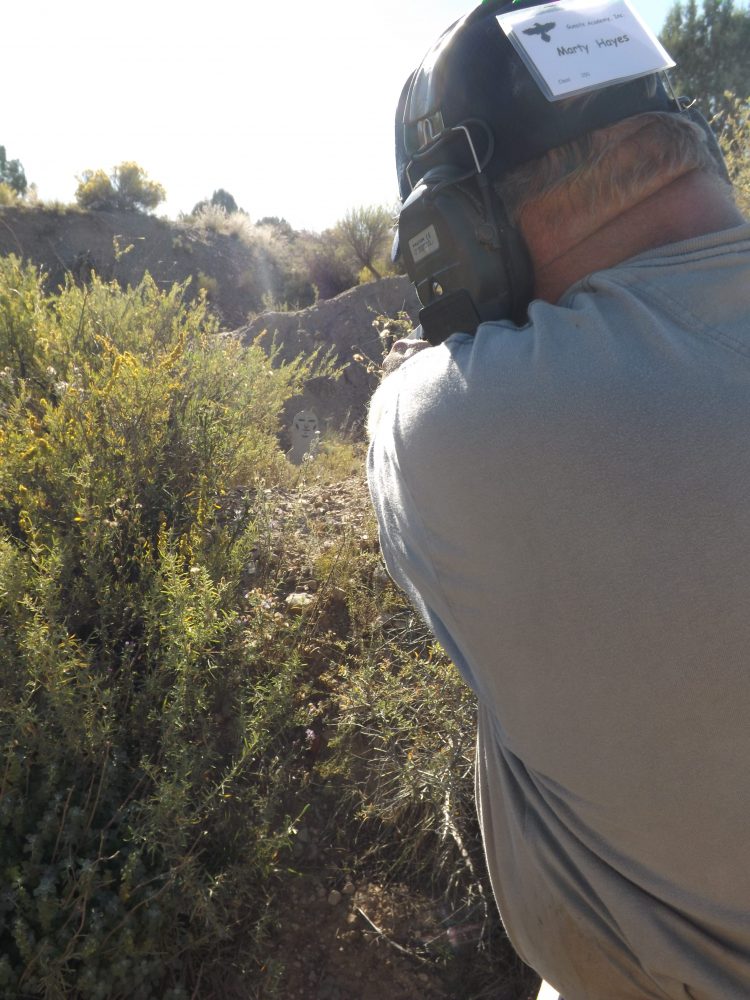
After 25 years of teaching this discipline, even this old dog learned a new technique and concept (which I should have known years earlier but somehow missed): the necessity of staying away from confined areas where a committed attacker can trap you as you negotiate a doorway. Instead, never back yourself into a corner. It was a great takeaway for me, and one that I will immediately implement into my curriculum when I teach building search principles.
We all looked forward to the night shoot on Training Day 4. Two techniques were taught: first the classic Harries Technique, where the back of the shooting hand is indexed against the back of the flashlight hand and pressed together to help control recoil. And they taught it for the right reason, as a technique to use when searching around strong-side cover.
But I wondered, would they teach the same for weak-side cover? No. They have adopted a modified version of the old FBI flashlight technique, where the flashlight is held in the weak hand and used to peer around weak-side cover. If you have to shoot, bring the handgun up and shoot one-handed.
The final reason I wanted to attend this course was to be able to say I learned The Modern Technique at Gunsite—the place it was invented. That way, if I were to argue either for or against a technique, I would have the bona fides of having learned it where it was developed.
I know of several instructors who eschew the Modern Technique in favor of newer, “sexier” shooting methods, yet they cannot claim any legitimate credentials for their criticisms to be valid. I would respect their opinions more if they could say, “I have trained at Gunsite, and here is why I believe my techniques are better.”
Modified FBI being taught in total darkness, with only flashlights for illumination.
CHANGING THINGS UP
Having said that, can one who has been shooting, competing, and teaching handgun shooting for over 25 years claim to have learned much by taking one class? Well, he can if he sets aside his strong hand (and his ego) and takes the class weak handed.
That’s right, the entire 750 rounds I shot that week were made with my weak (left) hand.
Why? First off, I figured after 35+ years of shooting one way, I would be totally frustrated by trying to change shooting techniques if I used my dominant right hand. But my left hand was basically a clean slate. For the purposes of this article and to best absorb the doctrine of Gunsite Academy, I wanted to place myself into the role of a fairly new shooter, so doing it left handed was the logical choice.
I also shot the course with a 1911, and the main takeaway from shooting the 1911 weak handed for the entire class was that the ambidextrous safety on the 1911, when actually used hard (as in a shooting class for a week) resulted in several failures of that part.
Janelle Cooper gives students tour of The Sconce, the Cooper home Jeff and Janelle built and that also served as an exercise in building a defensible residence.
Gunsite doctrine has the shooter place the shooting-hand thumb on the safety and ride it through the entire shooting sequence. When I did that, I broke two different ambi-safeties, as the fragile mechanism that joins the two pieces of the safety would not handle someone pressing down hard on the ambi-safety while firing the gun.
I admit that I typically use a very hard grip, and perhaps the combination of the hard grip and the .45 ACP rounds created an anomaly. I noticed that fellow student Diane Owens, shooting her Dan Wesson 1911 in 9mm, never had the same issue, although it did chew up her thumb a little. Still, at this time I cannot recommend the combination of the ambi-safety and the technique of riding the safety for left-handed shooters.
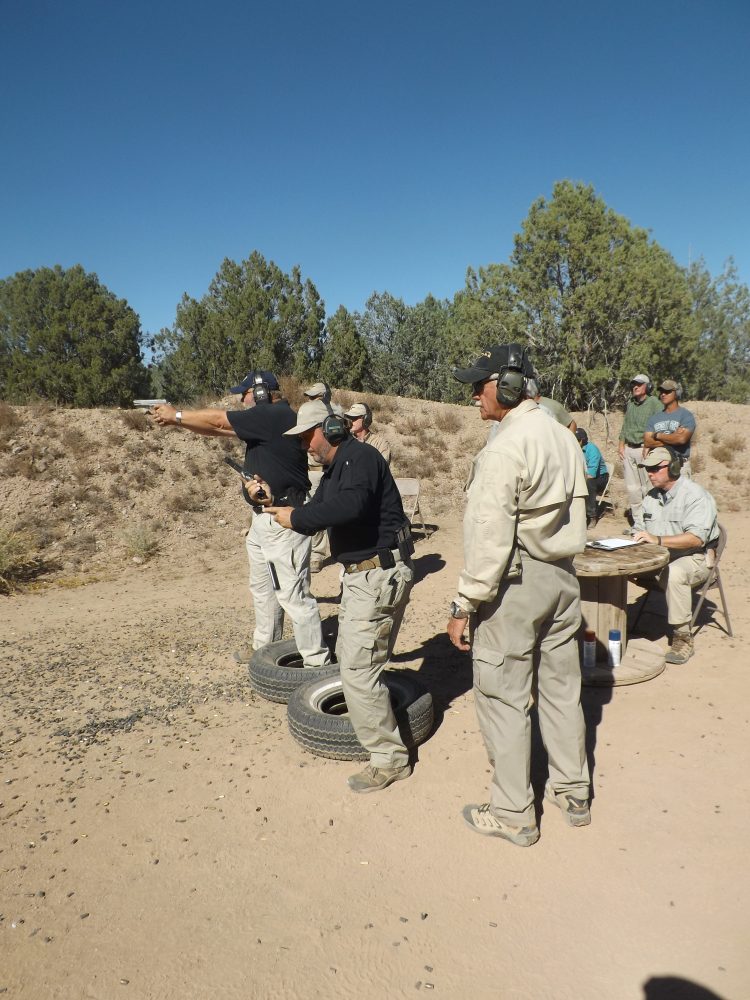
THE SHOOT-OFF
Cooper founded the philosophy of the Modern Technique of the Pistol based upon observed results in man-vs-man competition. His early handgun shooting experiences saw him competing in draw-and-fire competitions in what was known at the time as “leatherslap matches.”
On the final day of class, after the morning session of shooting the standards and additional simulator runs, the class got a taste of such a match in the form of the final shoot-off. Twenty years previous, my wife, Gila Hayes, took 250 and won the shoot off. Could I do as well?
The shoot off consisted of knocking down two eight-inch steel plates, one at ten yards and another at 15 yards, performing a mandatory speed reload, and hitting your half of a split Pepper Popper before your adversary. Each student participated in six matches and, after the dust settled, the Rangemaster figured out which one of the 23 students had the best record.
In our case, there were two undefeated, going 6-0—myself and David Newman, a police firearms instructor from Ohio. The final match was a “best of five” competition, meaning that the first one to win three matches won the shoot-off. Ultimately, David won, 3-1, and if I were to be bested, I am glad it was by a police firearms instructor.
THE GUNSITE FAMILY
One of the intangibles of graduating from a Gunsite course is becoming a member of the “Gunsite Family.” Instructors who have never gone and are not part of this group cannot appreciate the warm and welcoming feeling that comes with attending Gunsite and joining the family.
Throughout the whole week, the instructors went out of their way to make each student feel important and to ensure their needs were being met. When the students took much-needed rest breaks, the instructors were still on duty, discussing details about the training with individuals who had questions. No rest for the teaching staff, but the result was the students came away feeling appreciated, welcome, and informed.
Gunsite Chief Operating Officer Ken Campbell stops by and talks with the class.
When Col. Cooper was running Gunsite, he would invite the students over to his home to see his shooting memorabilia and gun collection. This stopped after Cooper sold Gunsite and retired from active teaching, but with the purchase of the school by Buz Mills, the Colonel reinstituted the tradition, and it lives on with Janelle Cooper and her daughters acting as tour guides.
If there ever was a sacred place for shooting instructors, this was it. On the last day, we were honored to take the tour, and it was a fitting conclusion to a great week of training. I understand that this doesn’t occur with all classes, as it is entirely dependent upon Mrs. Cooper’s availability. If you attend Gunsite and get this opportunity, you will not be disappointed.
All in all, I believe the experiences of attending Gunsite and becoming a member of the Gunsite Family were actually enhanced by my previous years as an instructor. The takeaways far exceeded the time and money spent attending, and I look forward to returning. In fact, I have already signed up for the 350 Intermediate Defensive Pistol course!
Marty Hayes is Director of Training and President of The Firearms Academy of Seattle, Inc and is a certified law enforcement firearms instructor and an adjunct instructor for two other national firearms schools. He has been teaching firearms to the civilian sector for over 28 years, and holds “master” ratings in four different shooting disciplines.
SOURCE
GUNSITE
(928) 636-4565
www.gunsite.com
